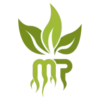Strawberries (Fragaria × ananassa) are a hybrid species that originated in Europe in the 18th century. They were developed by crossing the wild Virginia strawberry (Fragaria virginiana) from North America with the Chilean strawberry (Fragaria chiloensis) from South America. Strawberries have been cultivated since ancient Roman times, but the modern garden strawberry as we know it was first bred in France.
Prune strawberry plants in late summer or early fall after the harvest. Remove any old or diseased leaves and trim back runners (long stems that produce new plants) to prevent overcrowding. This helps the plant focus energy on fruit production for the next season.
Harvest strawberries when they are fully red and have a glossy appearance. Pick the berries with the green cap (calyx) attached by gently twisting or cutting them from the stem. Strawberries do not continue to ripen after picking, so ensure they are fully ripe before harvesting. Harvesting in the morning when the fruit is cool will help preserve its freshness.
General Prevention: To prevent pest and disease issues, ensure good air circulation by spacing plants properly and avoid overhead watering, which can lead to fungal diseases. Mulching with straw can help keep the fruit clean and reduce the spread of soil-borne pathogens. Regularly inspect plants for signs of pests or disease and treat any issues promptly. Rotate crops to reduce the risk of soil-borne diseases.
